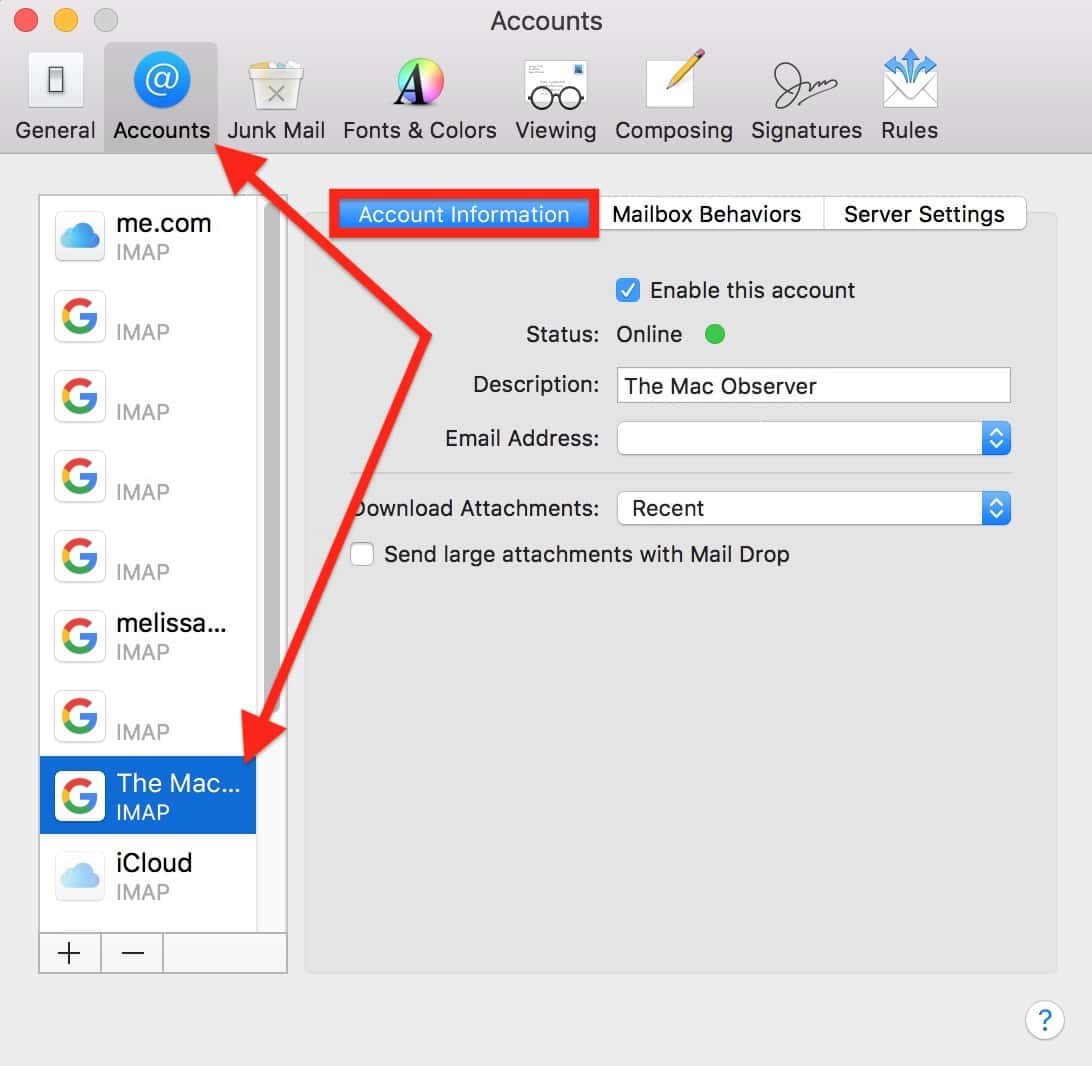- Included in the Mac operating system. Supports smart folders and robust filters.
- Gmail is an easy to use email app that saves you time and keeps your messages safe. Get your messages instantly via push notifications, read and respond online & offline, and find any message quickly. With the Gmail app you get:. An organized inbox - Social and promotional messages are sorted into categories so you can read messages from friends and family first.
- Download Yahoo Mail On Mac
- Mac Mail Program
- Cannot Download Mail On Mac
- Download Yahoo Mail On Mac
- Download Mail Mac Os X
System cleanup in one click
Download this app from Microsoft Store for Windows 10, Windows 8.1, Windows 10 Mobile, HoloLens. See screenshots, read the latest customer reviews, and compare ratings for Mail and Calendar.
Spark helps you take your inbox under control. Instantly see what’s important and quickly clean up the rest. Spark for Teams allows you to create, discuss, and share email with your colleagues. Explore the world of Mac. Check out MacBook Pro, iMac Pro, MacBook Air, iMac, and more. Visit the Apple site to learn, buy, and get support.
For many of us, email is a necessary email. Email makes our student and professional lives significantly easier, as a way of sending and sharing information. Not everything can be sent in a text, Facebook or WhatsApp message, or using Snapchat or Slack.
Often, especially for those in creative professional or knowledge economy roles, we rely on email to communicate professionally and send more complex and detailed information.

Get rid of email junk with CMM X
Remove every mail attachment stored on your Mac with a powerful macOS cleaner, CleanMyMac X. Give it a go!
Do emails take up storage?
Mail downloads, also known as attachments, are a big feature in busy inboxes, either taking up space in the cloud - if you use a cloud-based email client - on your phone, and if you use a desktop-based email client, on your Mac too. Attachments are everywhere, and you’ve probably got multiple versions of the same attachments in different places, taking up even more space.
Chances are, once you’ve downloaded and worked on an attachment, you won’t need the original. Or when you’ve worked on a document or folder, you’ve got more than one duplicate on your computer, and you can send back a revised attachment to the sender. In practice, this means one attachment often turns into at least three or four versions of the same document stored in different folders and within inboxes and/or cloud-based email services.
Download Yahoo Mail On Mac
How to find Mail Downloads on a Mac
Mac Mail Program
Apart from inside your inbox, mail attachments are found in one of two - or both - places within your Mac. You may also have some on your iPhone or iPad if you have email on another device.
The common way to view, save or delete email attachments in Mail (the built-in Mac OS email client) one by one:
Select a message that includes attachments. Look for the Attachment icon next to the sender's name in the message list.
In the message, do one of the following: Open an attachment in an app: Double-click the attachment.
Within a Mac OS, those who use Mail can find downloads and attachments in the following folder:
Users > YourName > Library > Containers > com.apple.mail > Data > Library > Mail Downloads
Cannot Download Mail On Mac
All attachments that you've either opened in Mail or viewed in Quick look gets saved there.
To delete Mail downloads saved in this folder just delete the files you don't need and then close the folder.
People who use a cloud-based, or another desktop email client, should see everything you’ve downloaded from your inbox in the Downloads folder. In some cases, you may have a duplicate of the same downloads in both folders, which means these will be taking up even more space. Now that you know where all your mail downloads are hiding, it’s time to stop your Mail app from wasting gigabytes of your Mac space.
Deleting Mail Download files from a Mac
One way to save space and stop mail download overload is to use an email client that makes it easier to find, organize and delete attachments. Take Unibox, for example, which groups emails by sender, making it far more intuitive and easy-to-use compared to Mail or other email services. This app is available from Setapp and described as “A welcome, fresh new approach to email on the Mac” (Macworld).
Within Unibox mail client you can do the following with email attachments:
Preview attachments without launching external apps;
Visually browse your attachments and images;
Quickly find documents and files with an attachment list.
All of these features make it significantly easier to find and delete attachments, no matter which email service you use. This app will work with every popular and self-hosted email provider, with one simple download and setup process.

Before switching email client, however, you might want to get rid of existing gigabytes of useless attachments. Most people would have attachments and duplicates of those files, images, documents and videos dating back to when they first bought their Mac, with some going back to previous Macs if you synced from one device to another when setting-up a new computer. That is potentially a lot of old downloads and duplicates!
How to free up email space on my Mac?
One of the best ways to get rid of Mac Mail downloads is using CleanMyMac X, a popular and easy-to-use app that over 3 million people are using to remove documents, files, images, apps, music and other junk that they don't need anymore.
Also available from Setapp, you can get your Mac tidied up then download a new email client that will keep it more organized.
Meantime, prepare for all the awesome things you can do with Setapp.
Read onSign Up

You just need to locate the Apple Mail Backup Location, as all your emails are stored automatically on your hard drive. From there you can just make the copy of the apple mail database and your backup will be stored securely. Here's how you can locate your apple mail backup location:
Find and Open the Folder Where OS X Mail Stores Mail
To go to the folder that holds your OS X Mail messages:
- Open a new window in OS X Finder.
- Select Go | Go to Folder… from the menu.
- You can also press Command-Shift-G. - Type '~/Library/Mail/V3'.
- Press Enter.
You can find your folders and messages in sub-folders to the V3 folder:
- Local mailboxes are in the Mailboxes sub-folder.
- POP email accounts can be found in sub-folders with POP- in their name.
- IMAP accounts' mailboxes are in sub-folder that have IMAP- in their name.
The messages are stored in .mbox folders, one per OS X Mail email folder. Open and explore these folders to discover (and open or copy) the emails saved as .emlx files.
Find and Open the Folder Where Mac OS X Mail 5–8 Store Mail
To open the folder where Mac OS X Mail keeps your messages:
- Open a Finder window.
- Select Go | Go to Folder… from the menu.
- Type '~/Library/Mail/V2'.
- You can have Finder auto-complete the folder names by pressing Tab. - Click OK.
Mac OS X Mail stores the mailboxes in sub-folders to the Mail directory, one sub-folder per account. POP accounts start with POP-, IMAP accounts with IMAP-.

Find and Open the Folder Where Mac OS X Mail 1-4 Store Mail
To locate the folder where Mac OS X Mail 1-4 stores mail:
Download Yahoo Mail On Mac
- Open a new Finder window.
- Go to your home directory.
- You can use the Home toolbar button
- or select Go | Home from the menu to go home. - Open the Library/Mail directory..
Download Mail Mac Os X
Some alternative to Backup Email on Apple Mail are:
